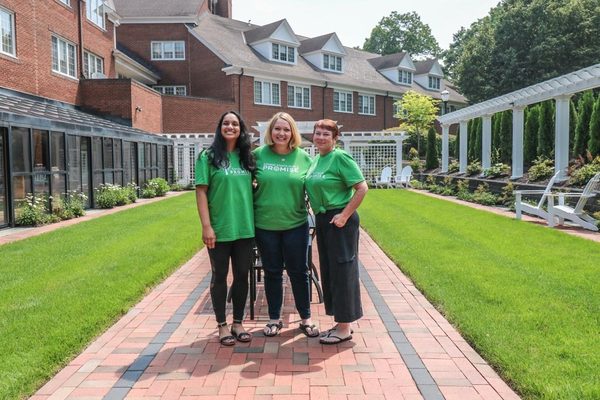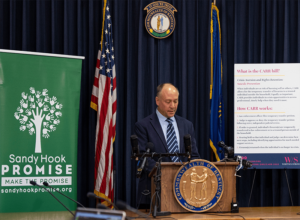Our guest youth blogger Dyuthi Kumar is our programs intern and a former Youth Advisory Board member. She starts college with a continued passion and commitment to ensure a safer, inclusive environment for all.
As I shopped around for freshman dorm room essentials one idle Saturday morning, I made my way to the Back-To-School section. As a recent high school graduate, this run was a bit of nostalgia for me more than anything else. I watched and quietly cheered on the tiny “salespeople” running down the aisle. They hoped to persuade their parents that the required “pencil case” on the list could reasonably be satisfied by the light-up, glittery trinket in their hands. Yet in that joyful moment, I felt a flash of dread. My mind drifted to another group of kids that had captured my mind all summer – the students killed last year in an unthinkable act of gun violence at Robb Elementary.
I find it hard to not think about them. Nor should any of us forget.
A Systemic Failure
“A systemic failure” is how best to describe the first official report about what happened in Uvalde. People who could have had the opportunity to mitigate the damage squandered it. From the ease with which the shooter legally obtained his guns to the actions of certain officers on site, nothing added up. Everything was jarring.
Still, where were the deeper conversations around the days, weeks, and even years that led up to these catastrophes? It’s in those days, weeks, and years where research tells us the warning signs exist and prevention should begin.
Those with the power to prevent the tragedy missed the signs. As a minor, the Uvalde shooter asked multiple individuals to purchase him guns. He explicitly confided in family members and friends about his plans to not live past age 18. He harassed female students and shared horribly graphic content. Nobody reported his online activity to law enforcement or any other authority.
School Shootings Are Preventable
From Columbine to Sandy Hook and Parkland to Uvalde, and the thousands of gun violence tragedies in between, warning signs were present and too often mismanaged. In 4 out of 5 school shootings, someone knew about that attacker’s plan but failed to report. The Secret Service and Department of Education conducted a major study on school shootings. They found that of 67 averted school shootings from 2006 to 2018, every single plot was prevented from reaching fruition by people who saw concerning signs and secured help. Classmates observed concerning behavior that told a Trusted Adult uncovered nearly two-thirds of the plots.
As a recent high school student, I can attest that information about other students passes like lightning among us, especially regarding online activity. When you’re a student, feeling like there are Trusted Adults in your school creates a safe space we all need. The report concurred—schools that foster good relationships with students and encourage them to speak up when they sense warning signs evade violence.
Research-based Violence Prevention
American schools have access to free research-based gun violence prevention programs that properly educate students and educators on how to recognize the warning signs and get help when their classmates are in danger or need help. Part of my work with Sandy Hook Promise was as a Youth Advisory Board member where I advocated for this type of programming in my school and community. Through my SAVE (Students Against Violence Everywhere) Promise Club and the Say Something program, my peers and I had a space to come together for conversation and action around being an Upstander. We learned how to support each other when we saw concerns. We followed best practices to raise those up and get help. All school communities should have a safe, inclusive learning environment for its students. And have these supports and resources to do so.
Also, we must bookmark funding for our schools to afford mental health counseling and resources. Suicide is the second leading cause of death for young Americans. It accounts for 50% of gun violence, and has oftentimes been the true end-goal of a school shooter. Again, when students have strong connections and a sense of trust, they are more likely to speak up to find support, whether it’s for a peer or themselves.
Empowering Your Community Against Gun Violence
As a nation, our pride flows from the type of society our kids grow up in and we all share a stake in that vision. Broader family and community involvement in schools, research-based violence prevention programs, and properly equipped schools are paramount to ensure student safety and a commitment to mental health. Schools and their staff need to begin taking their own initiatives to facilitate conversations about recognizing signs and mental health. And students! Be the change you want to see. Ask the Trusted Adults in your school what you and your peers can do to help forge change. Maybe it’s a club, maybe it’s a rally, maybe it’s just having those hard conversations. It’s all within your reach.
If there is one thing we can take away from the shattering reports, it is that every gun-death is preventable.
Following the weeks after the Uvalde, Texas school shooting, my family expressed gratitude that I had graduated. They were relieved I was officially out of the public school system. What strange thanks to have to give, that your child would not be slaughtered in their grade school classroom.
But I will not look away and I will not forget. As I move on to college, I will continue to make a promise to be a force for change. I will do whatever I can to protect children from gun violence. Remember as you or your loved ones head back to school, we all share that responsibility. As students, community members, and global citizens, we must protect one another.
How You Can Get Involved
Educators, students and family members can all contribute to safer schools and communities. Through our Know the Signs programs, there are no-cost opportunities to learn and engage. Whether you’re a student looking to activate your classmates, an educator looking to bring evidence-based prevention to your school or a parent who wants to help teach your children the basics of school safety, our Know the Signs programs have solutions for you.


